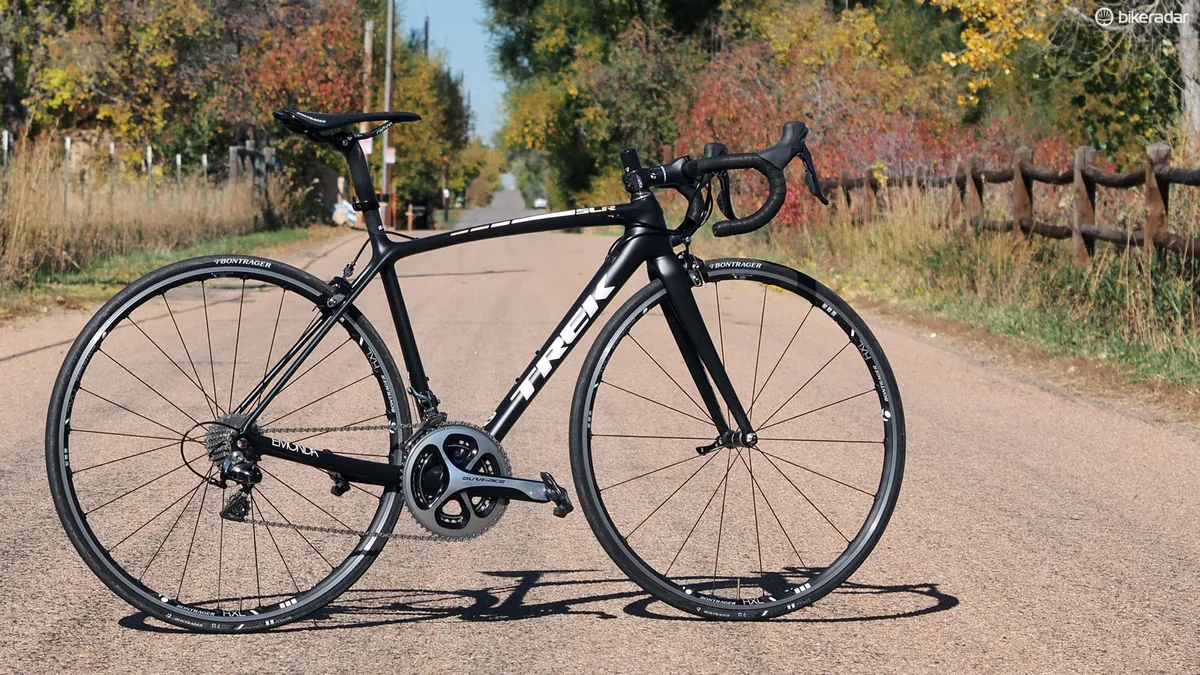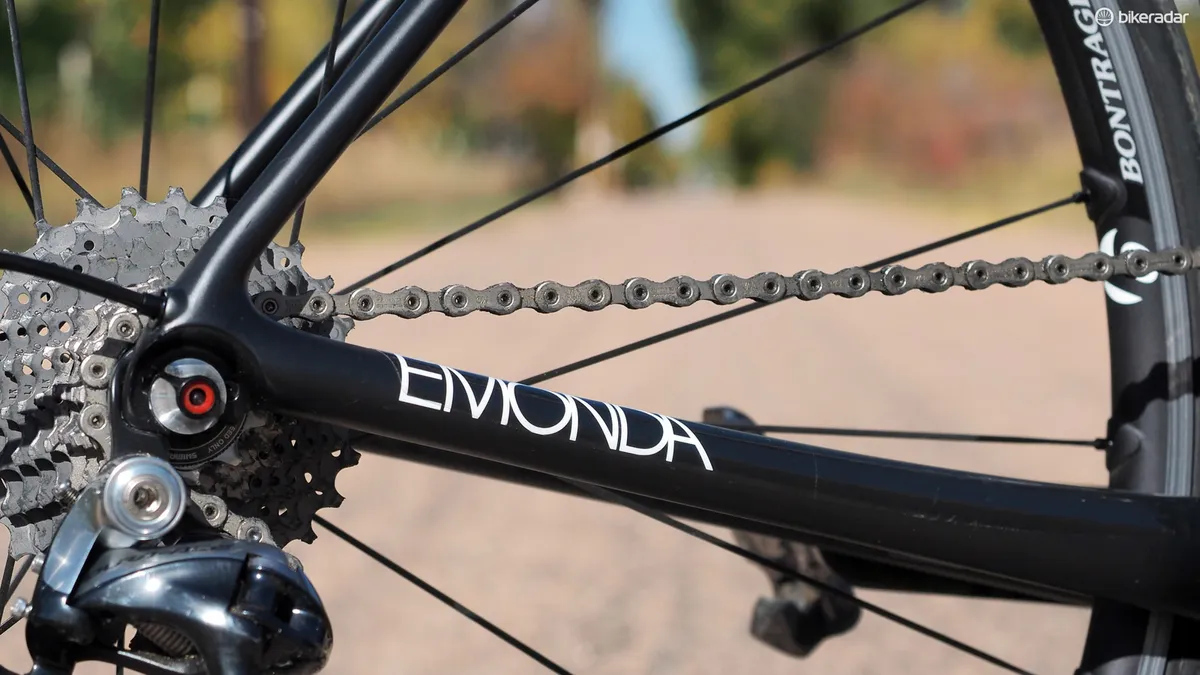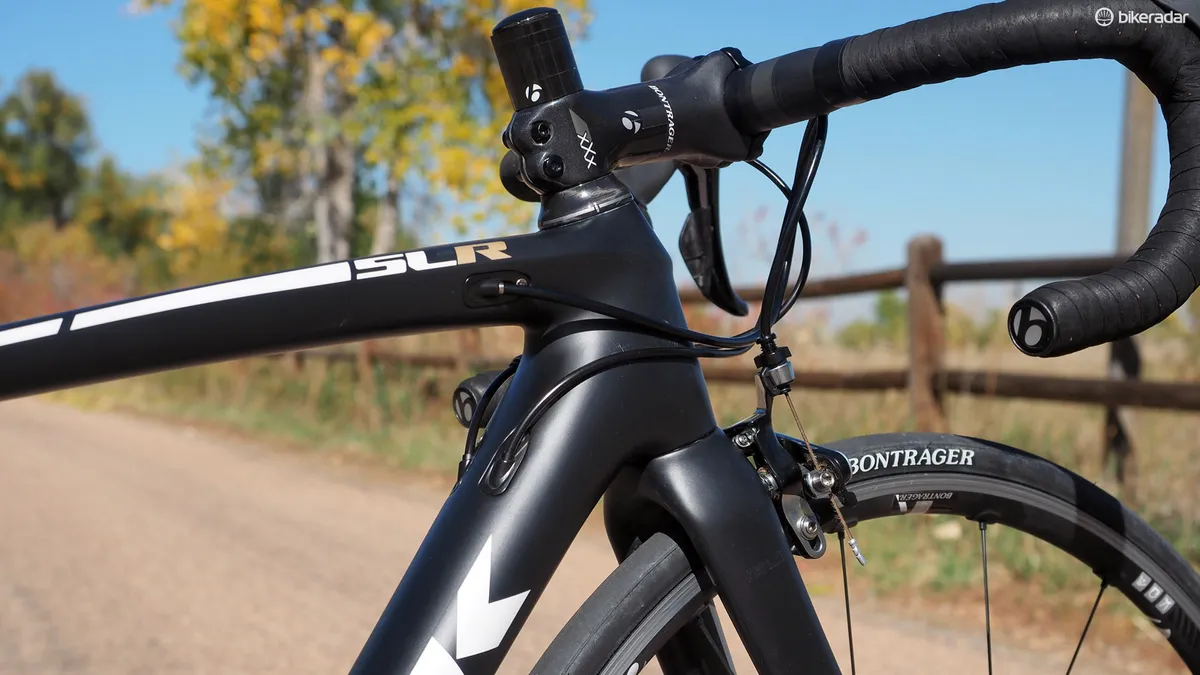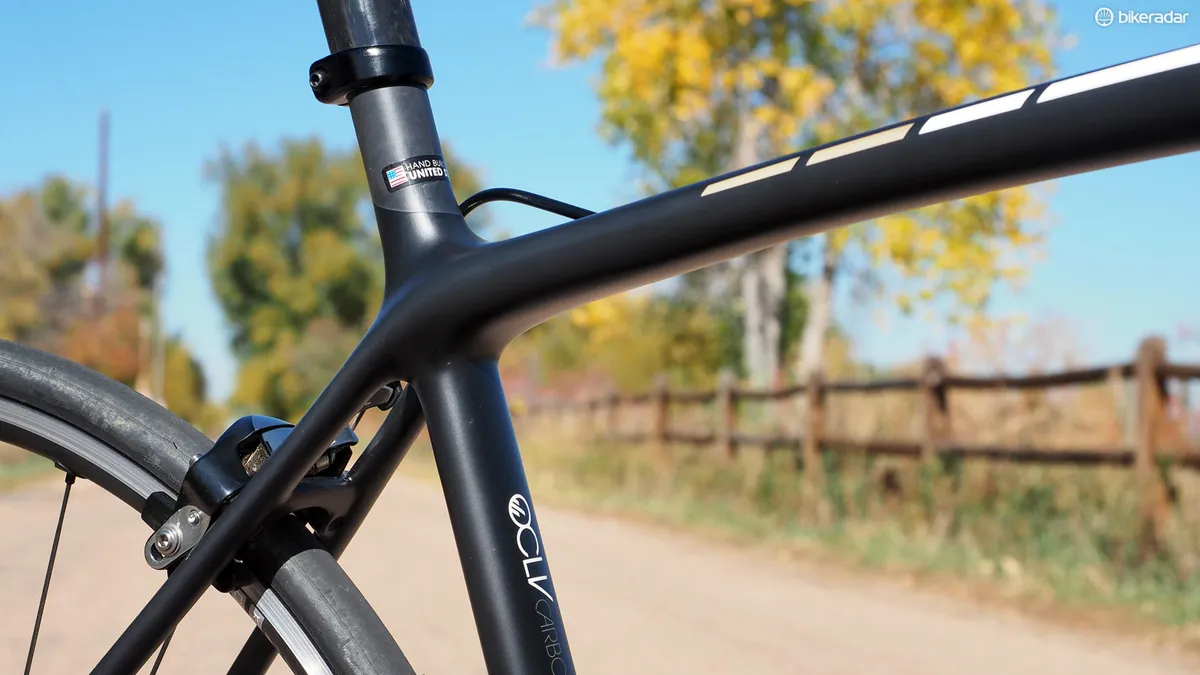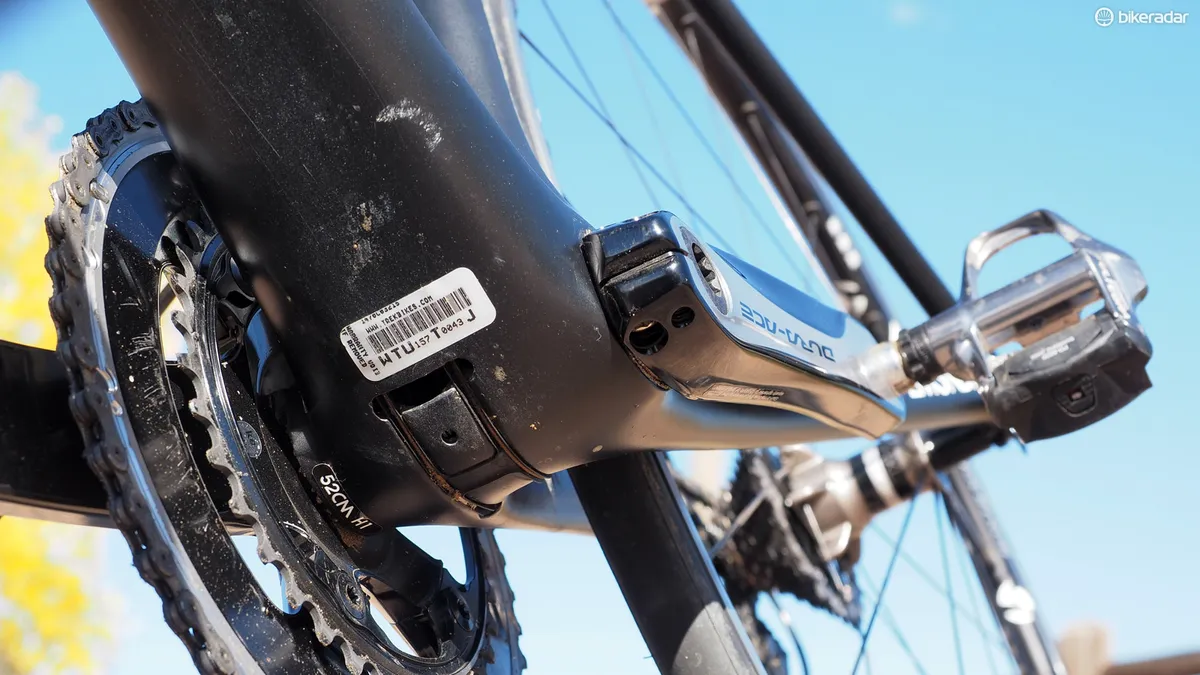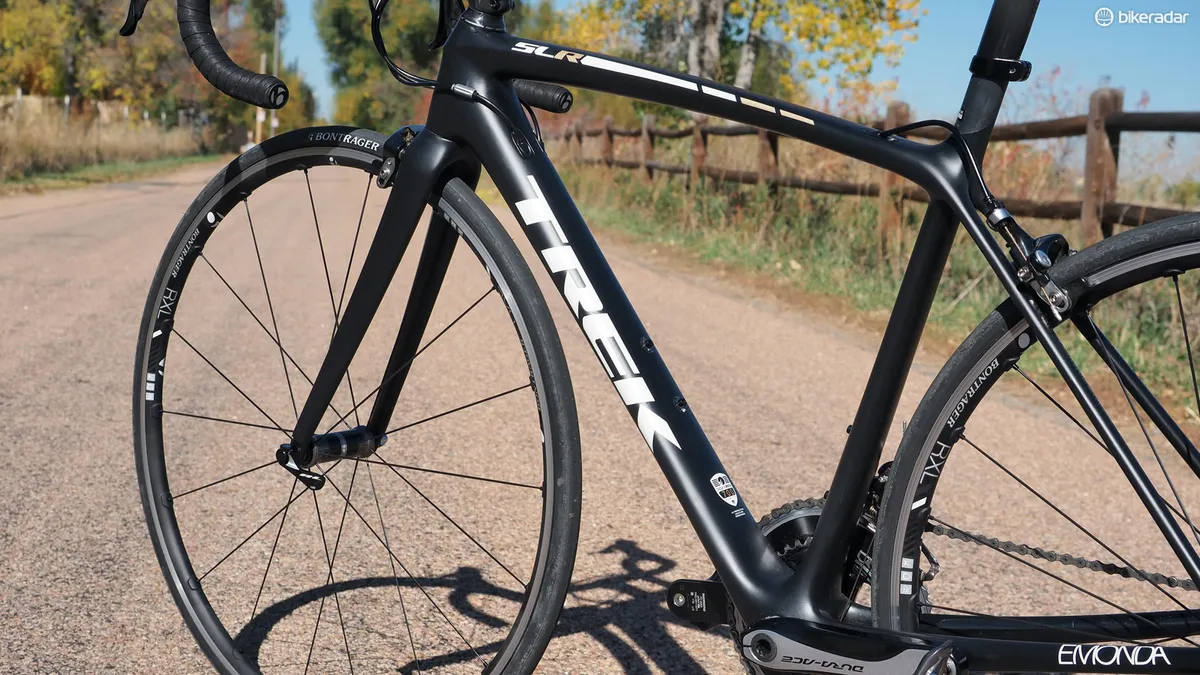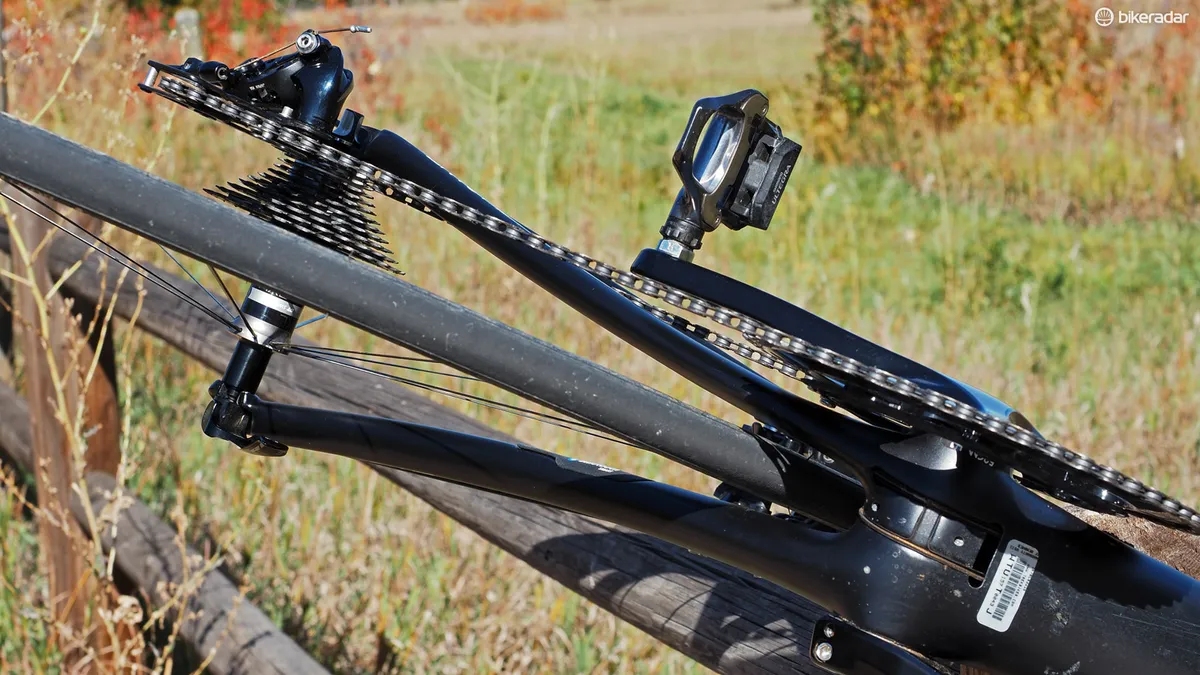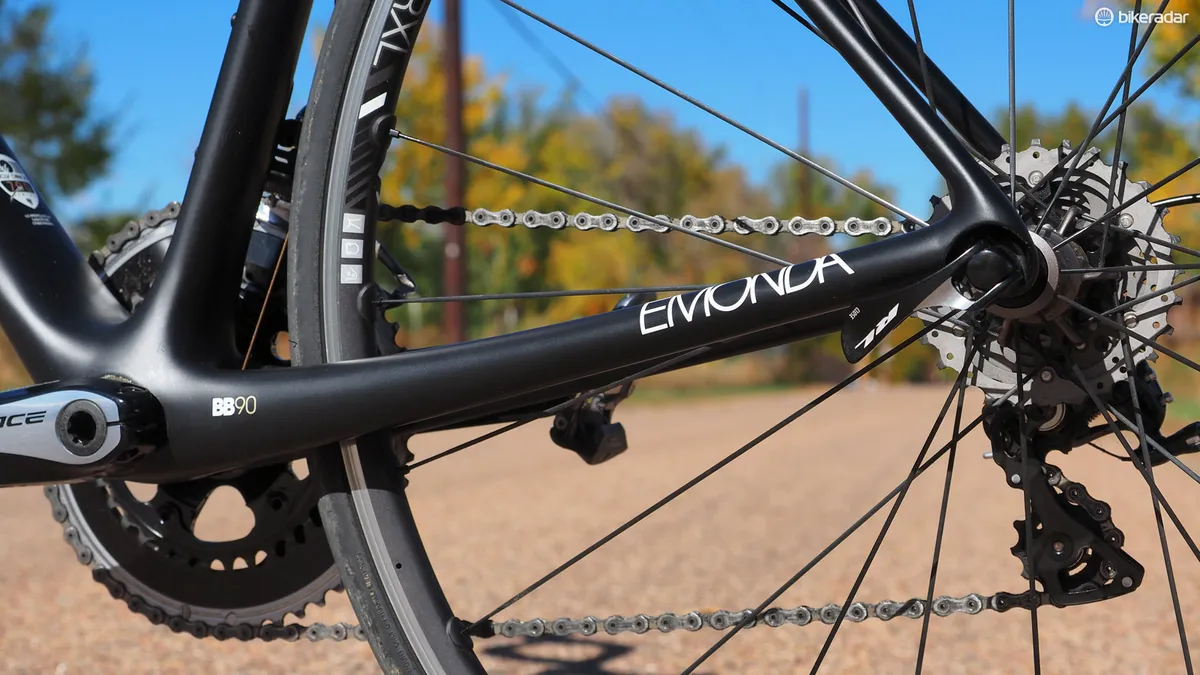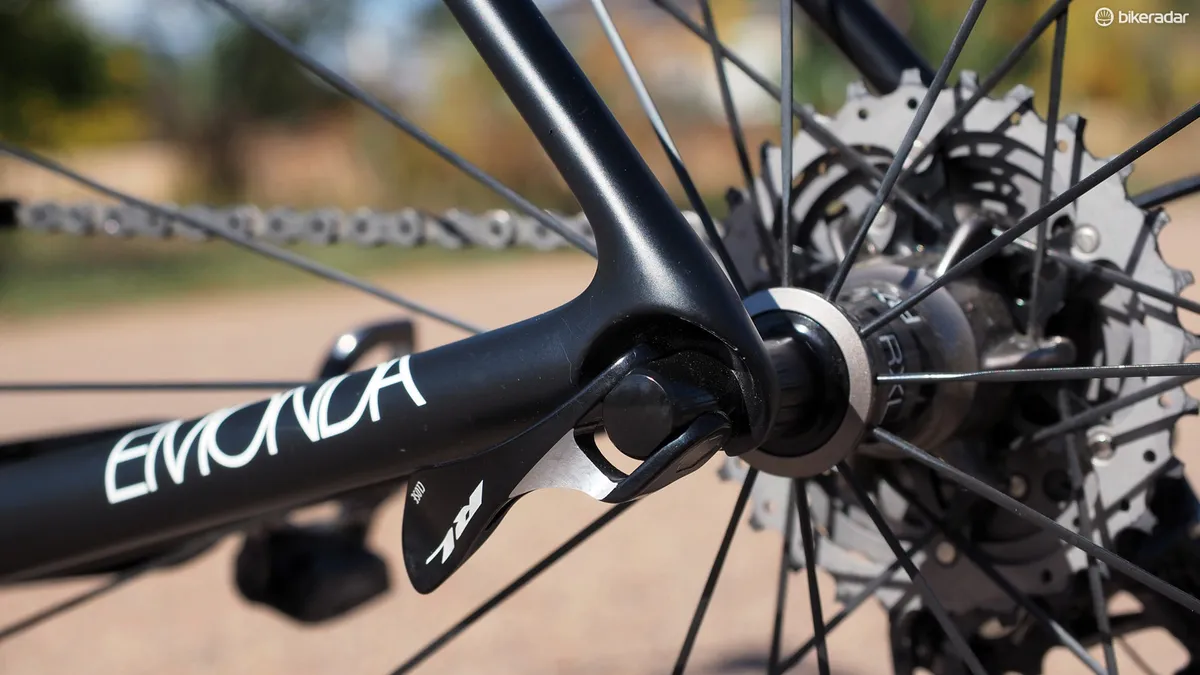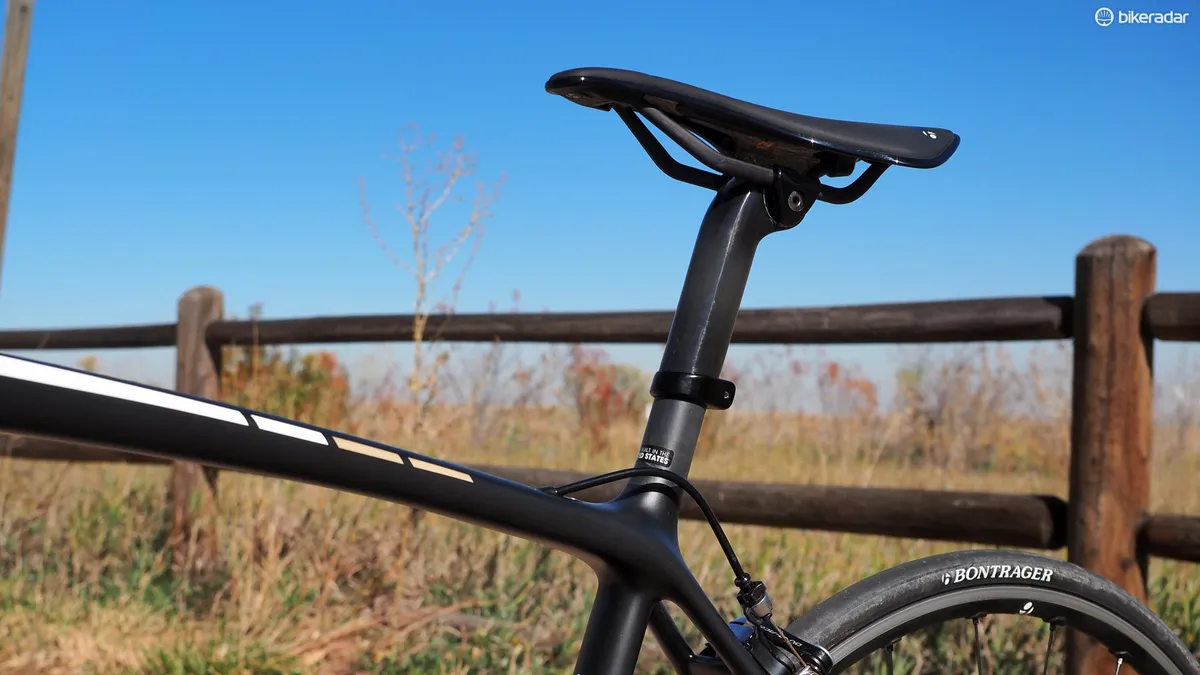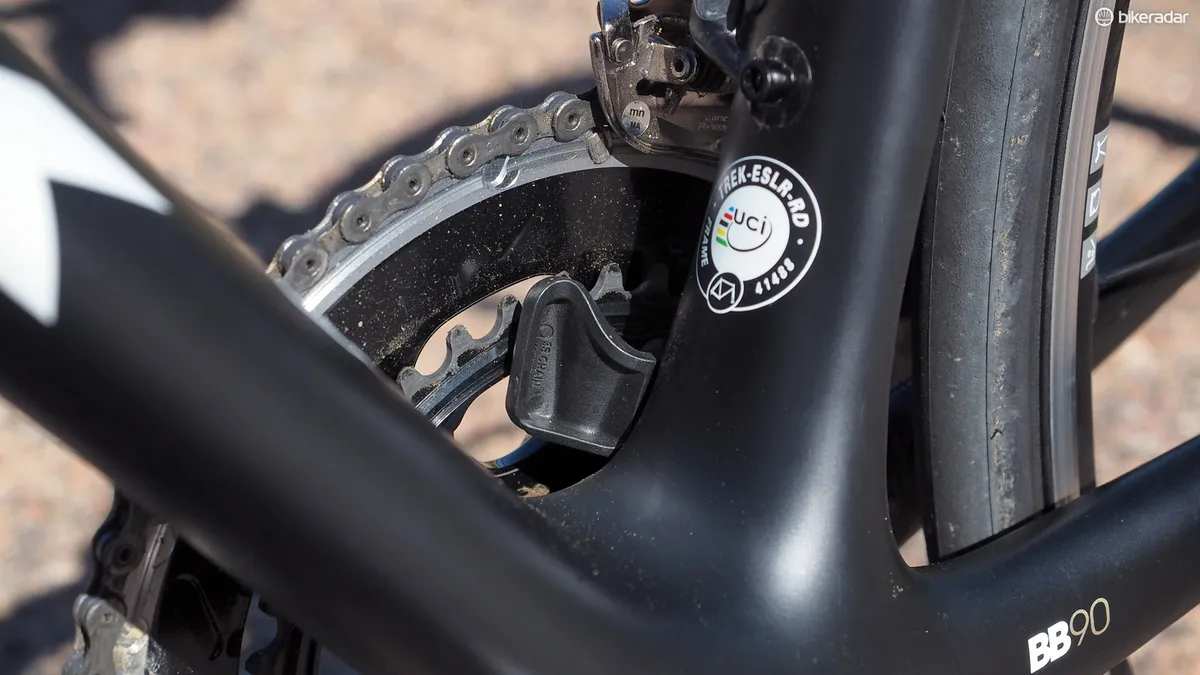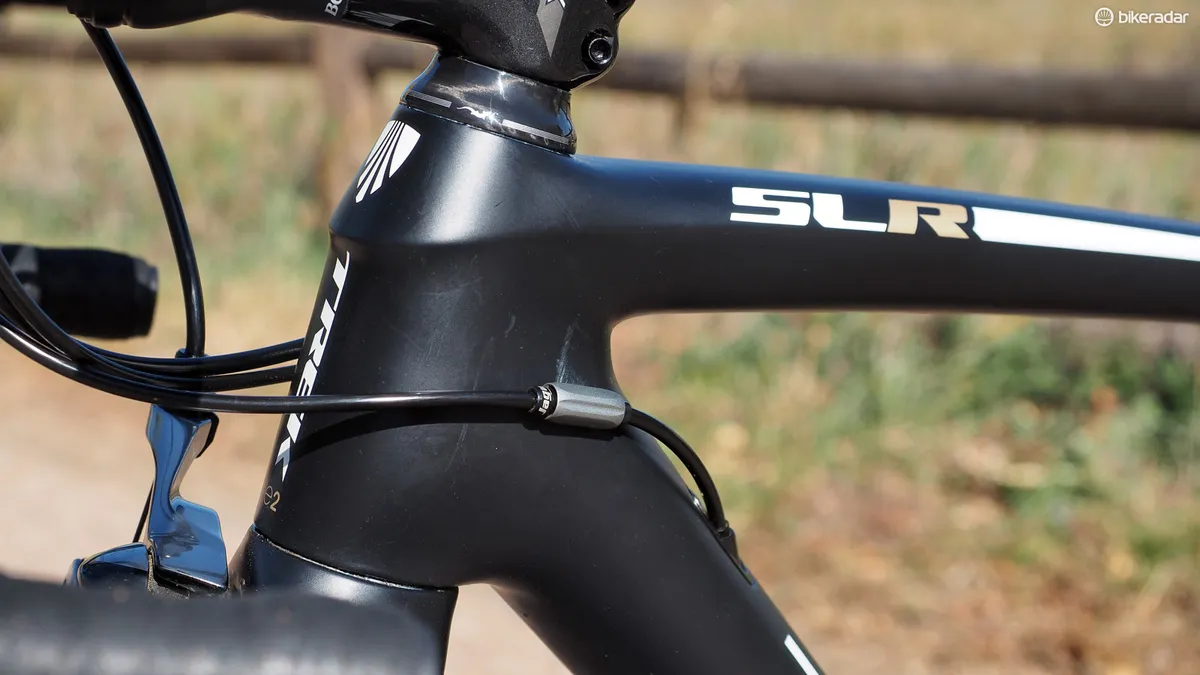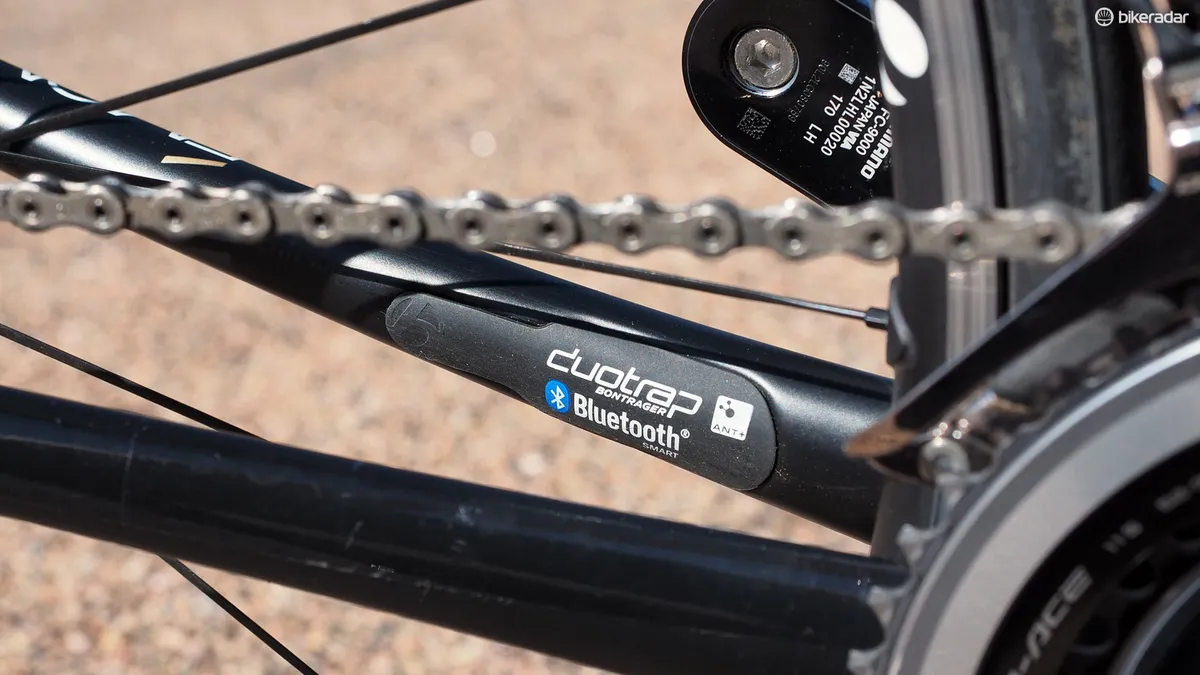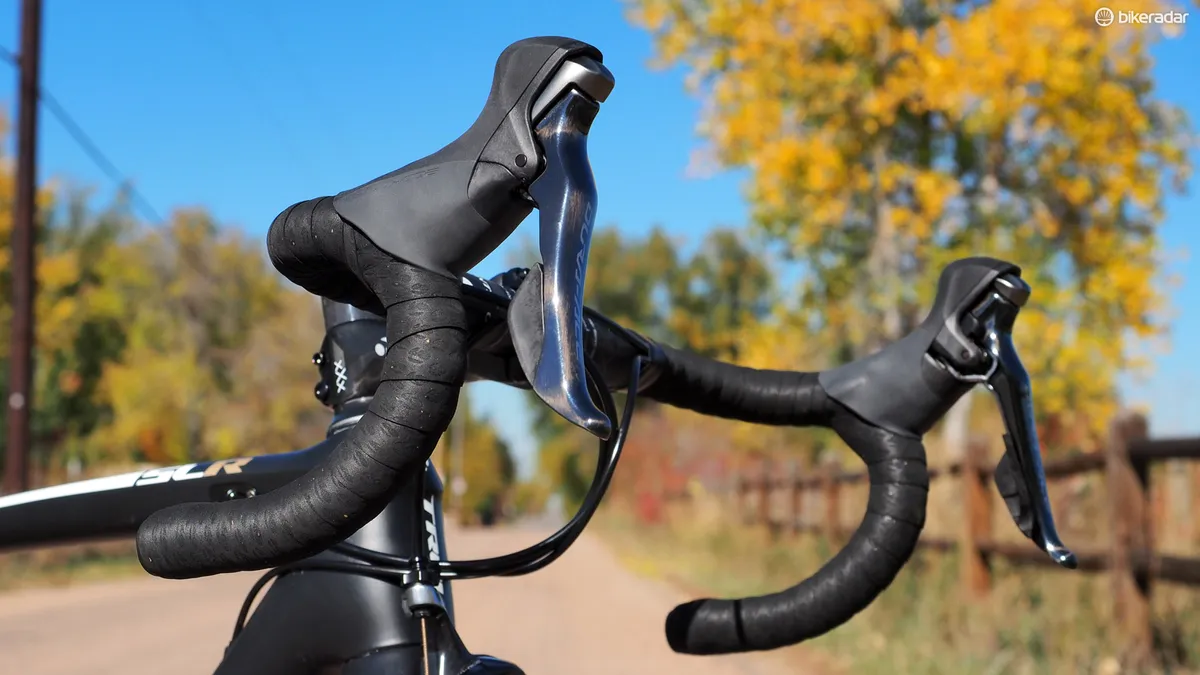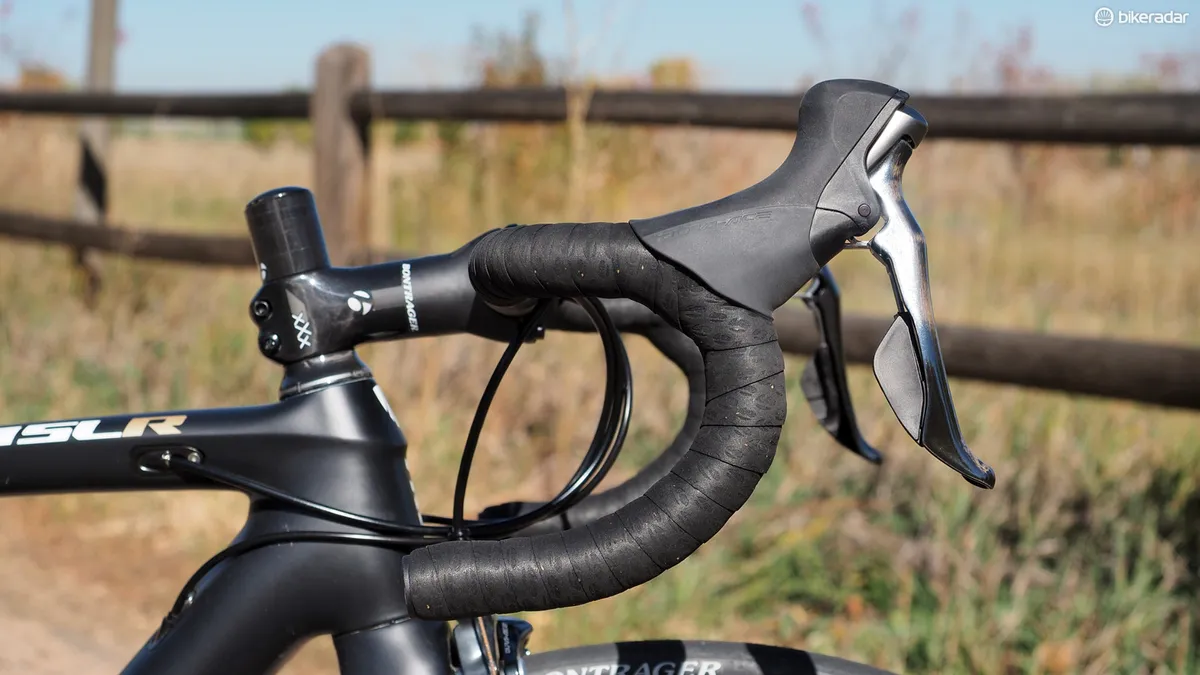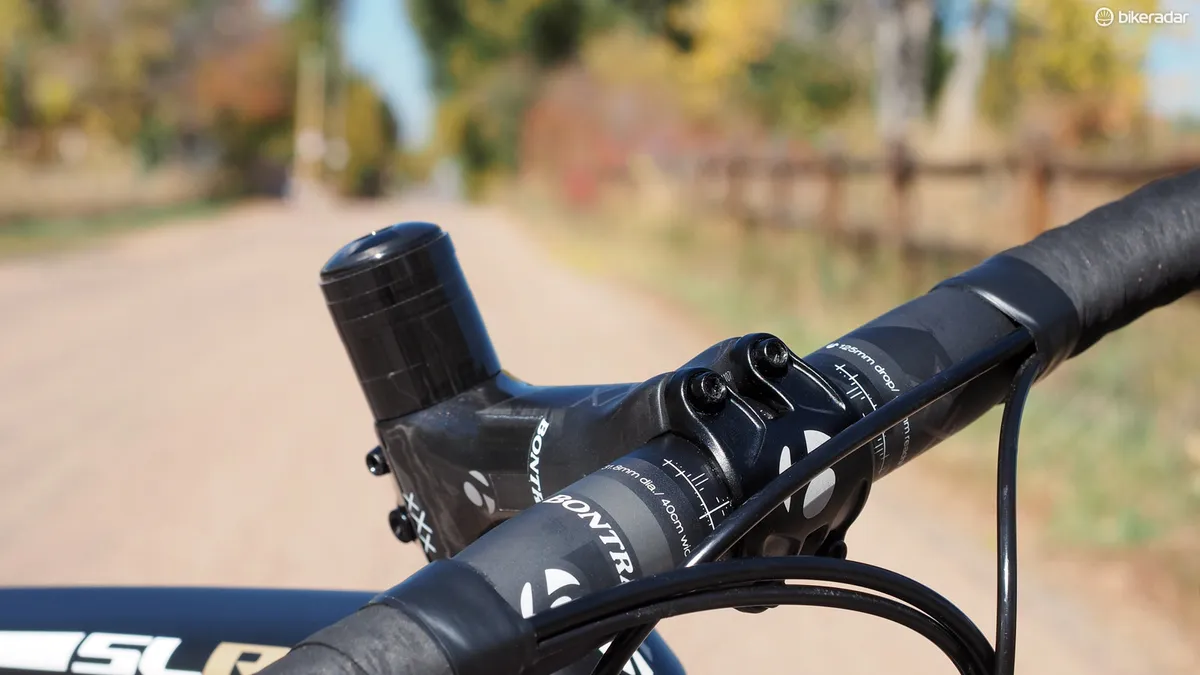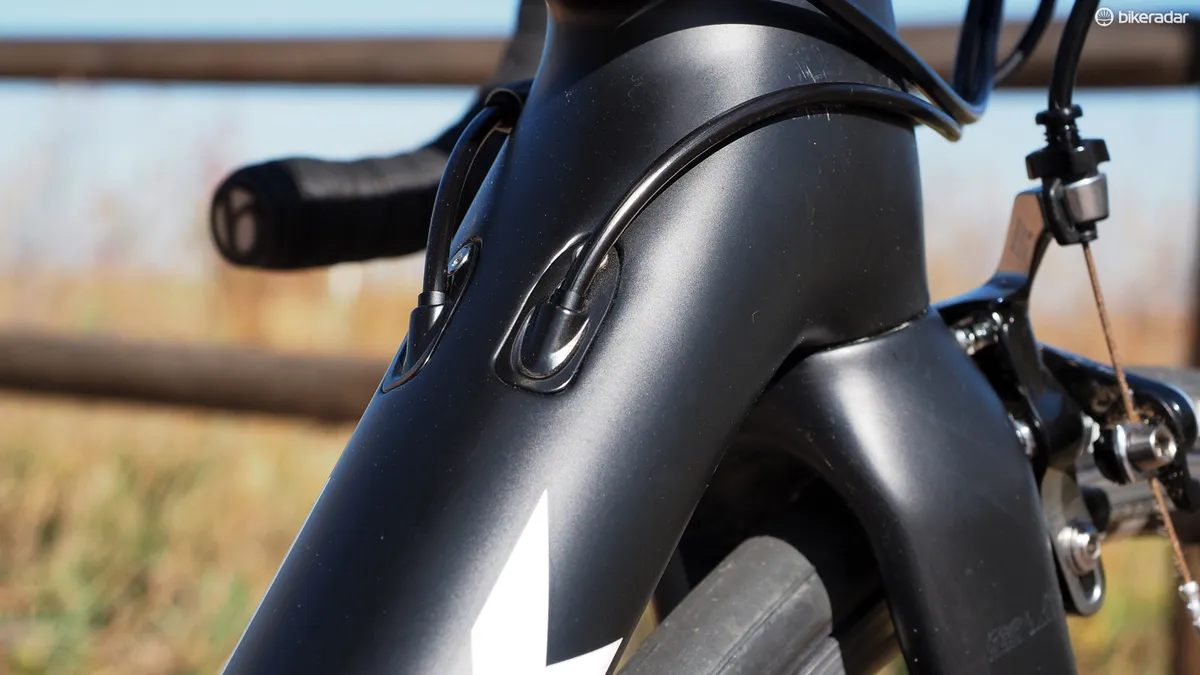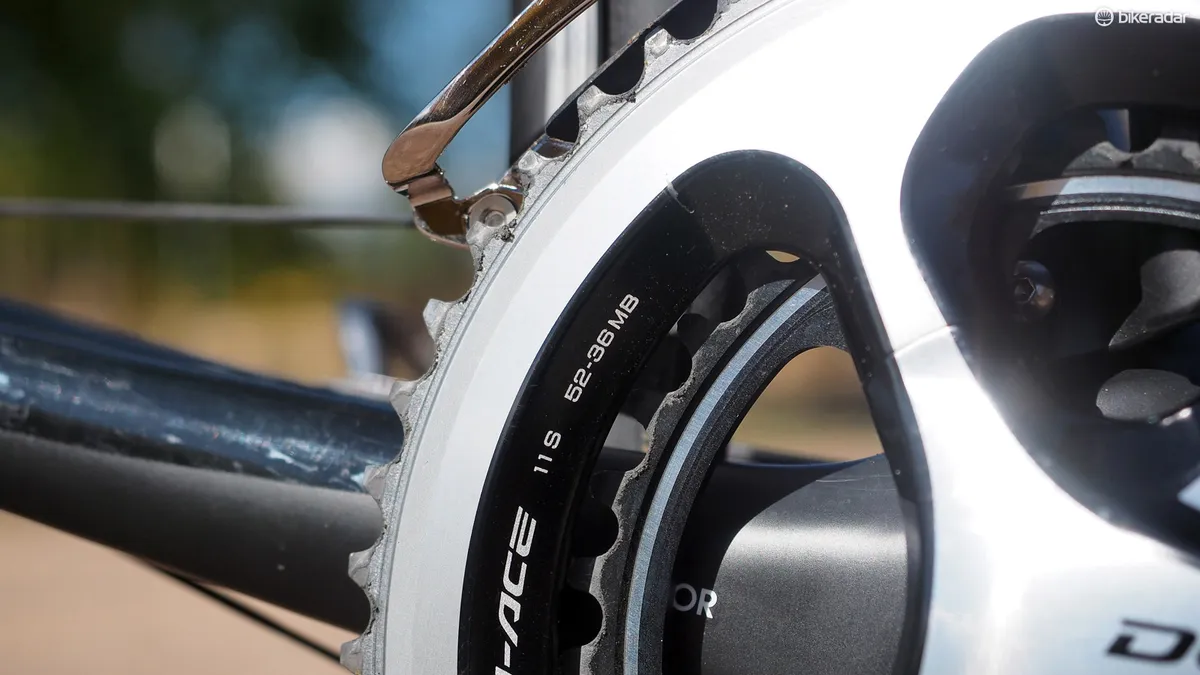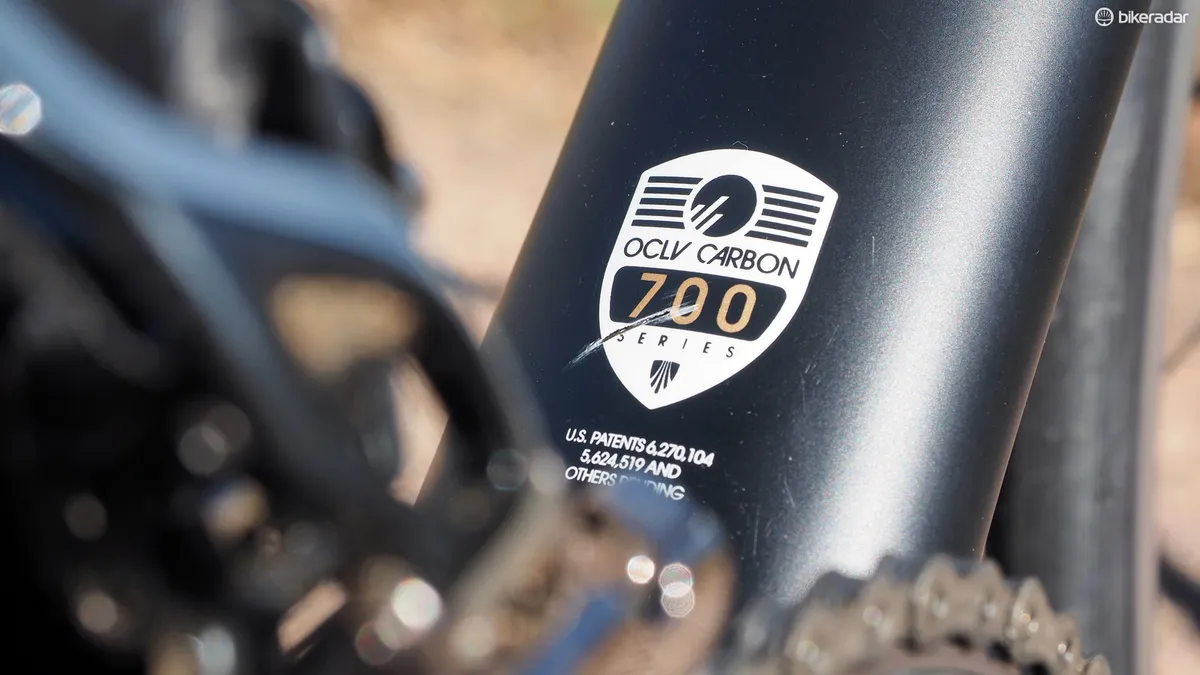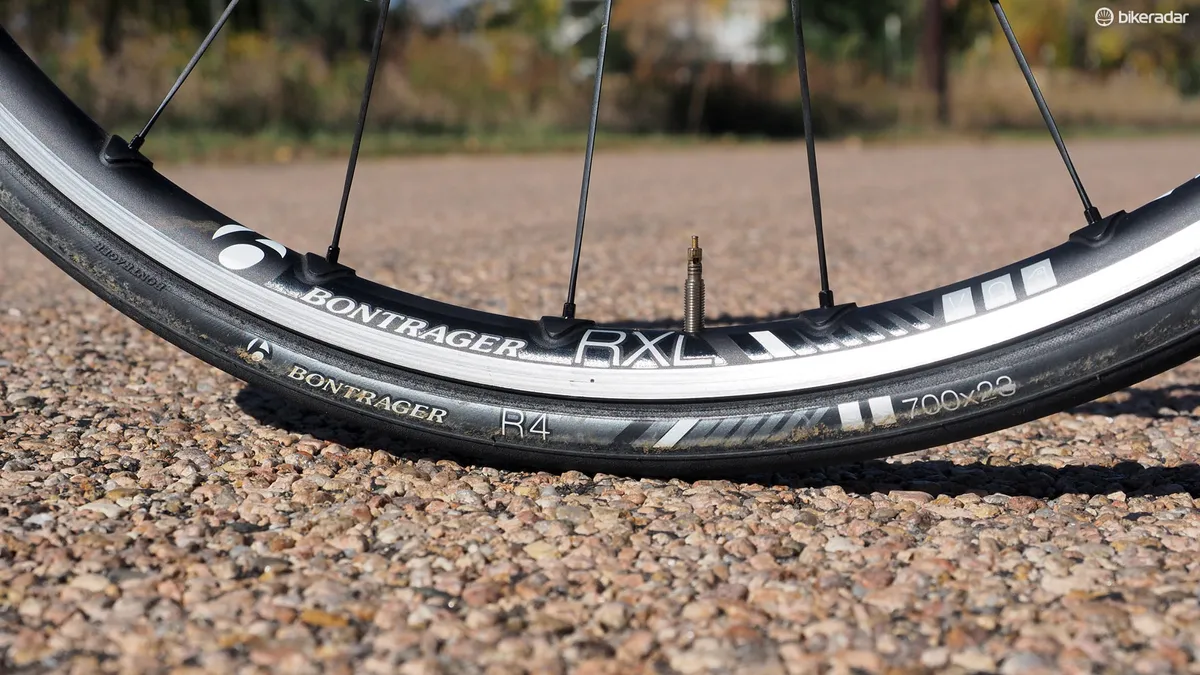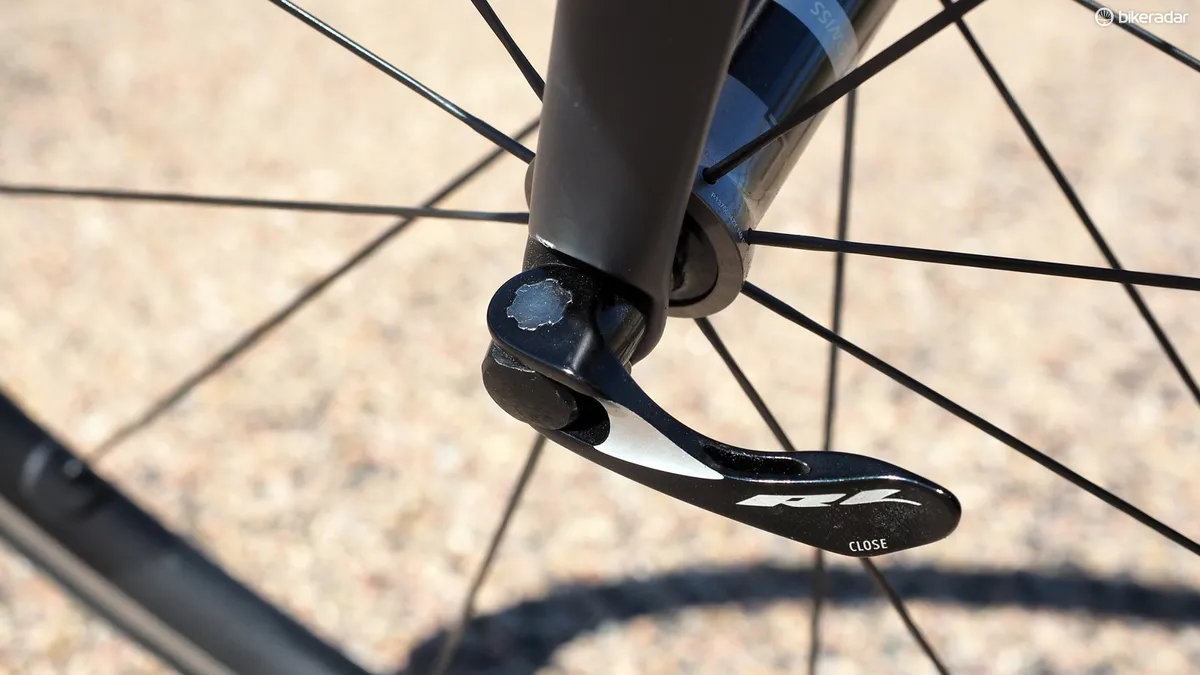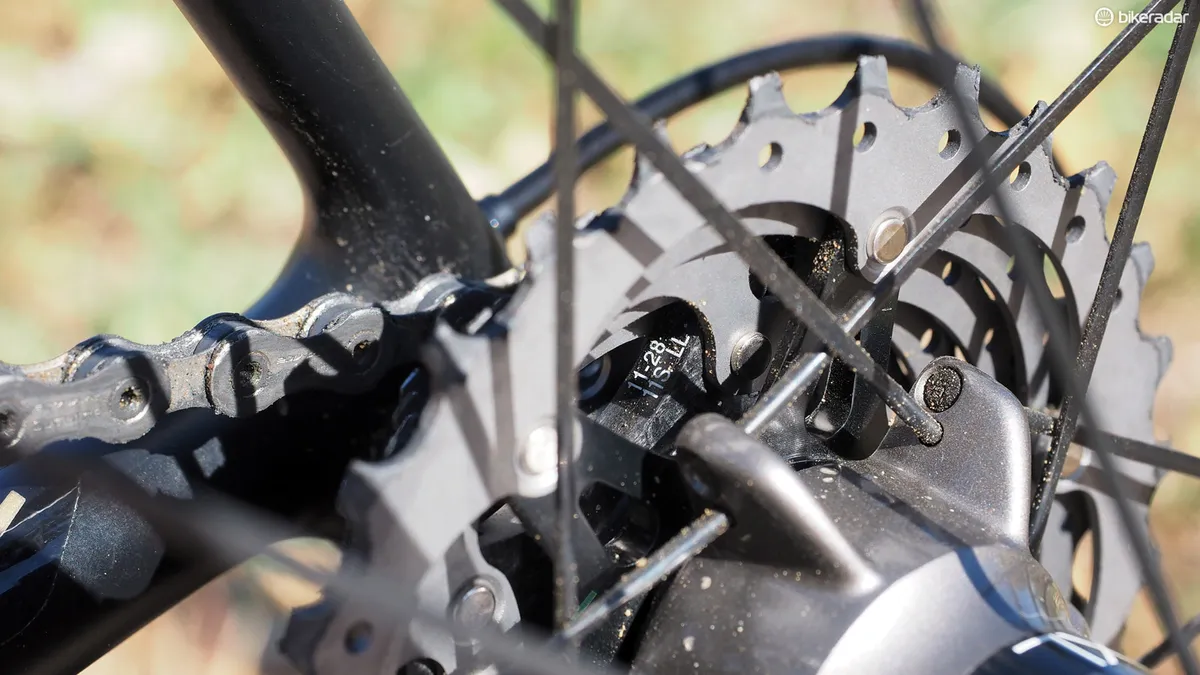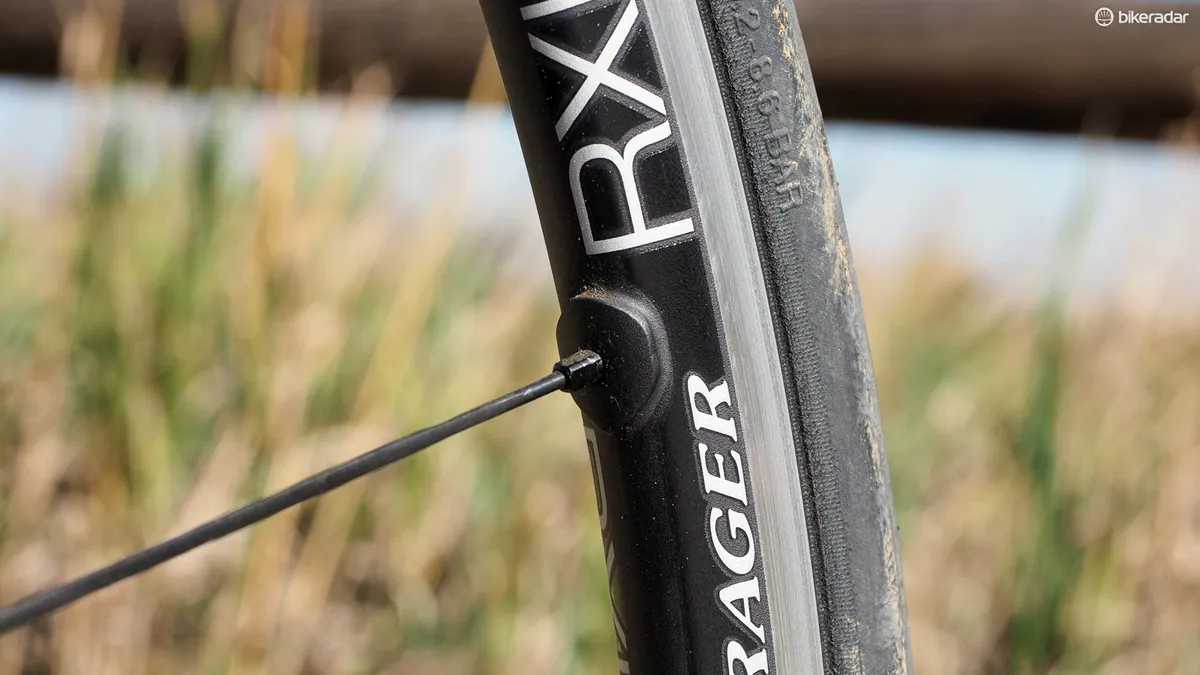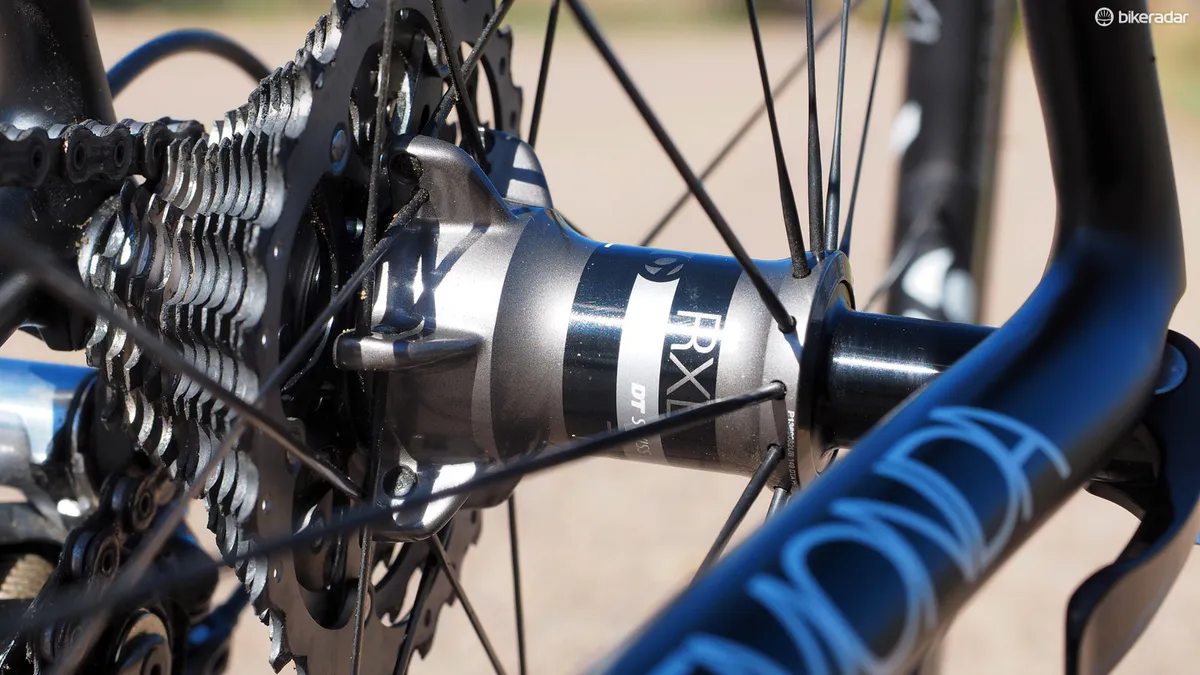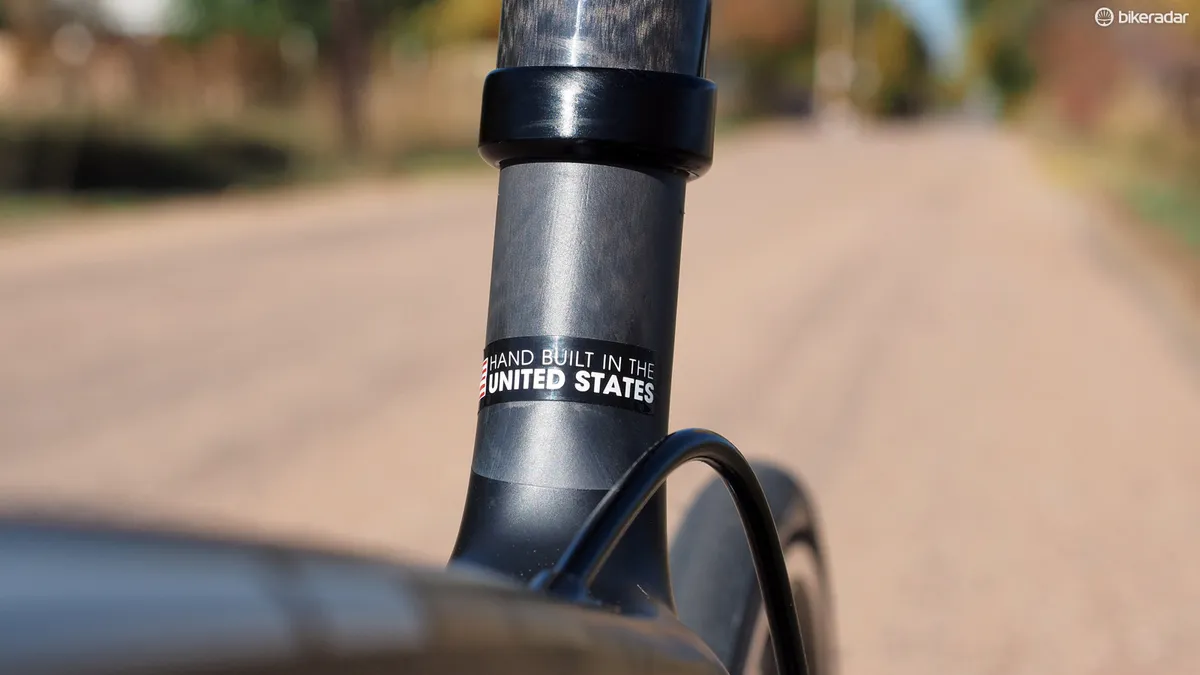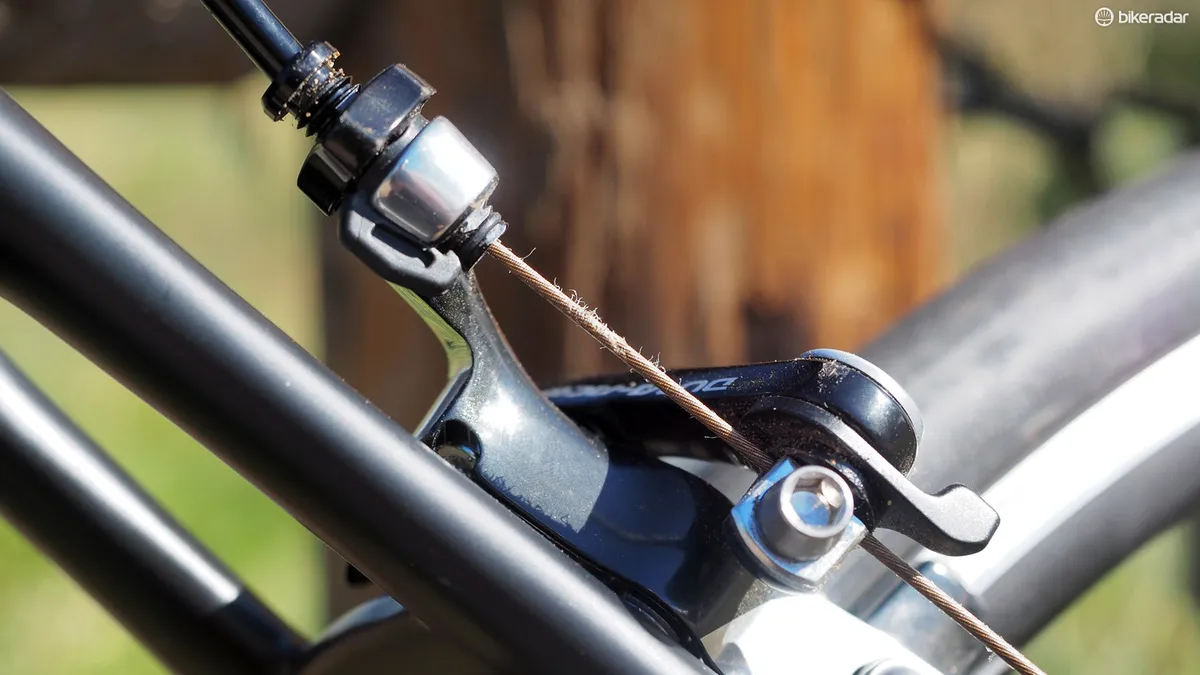Trek made quite a splash when it unveiled the stunningly light Emonda SLR 10, with its jaw-dropping 4.65kg (10.25lb) claimed weight and a correspondingly high price.
We'd argue that the SLR 8 model makes an even bigger impact though. It has the same feathery frame but a more sensible build kit, and costs less than half of the flagship model. Trickle-down, you say? Yes, please.
- Highs: Incredibly light, fantastic handling, awesome brakes, huge range of sizes
- Lows: Highly variable size-dependent ride quality, potentially creaky cassette
- Buy if: You absolutely live for climbing
Ride and handling: Light and efficient but ride quality is highly dependent on sizing
Fans of prototypical top-end German machines will feel right at home on the new Emonda SLR. The chassis is not only extremely light but also remarkably rigid and efficient. It's quick and responsive when you get on the gas and, as you'd expect with a total weight of just 6.19kg (13.65lb) without pedals, it's an absolute beast on steeper climbs, where that stiffness-to-weight ratio can really shine through.

Big, round(ish) tubes and high-end carbon fiber materials make for a light and stiff frame
The Emonda's geometry figures are nearly identical to those of Trek's long-running Madone, so it's no surprise that it handles extremely well. It has perfectly neutral manners that are well-suited to road racing and all-day rides. It's quick enough to easily adjust your line if you encounter an obstacle mid-corner, for example, but is stable enough to inspire confidence at speeds that are well in excess of common sense.
We find the rider positioning spot-on too. The suitably short head tube and reasonably spacious top tube on our H1 version inspires an aggressively long-and-low stance. As with the Madone, Trek also offers the Emonda in a taller H2 version for riders who want the low weight but with a more upright profile – both in a huge range of sizes.
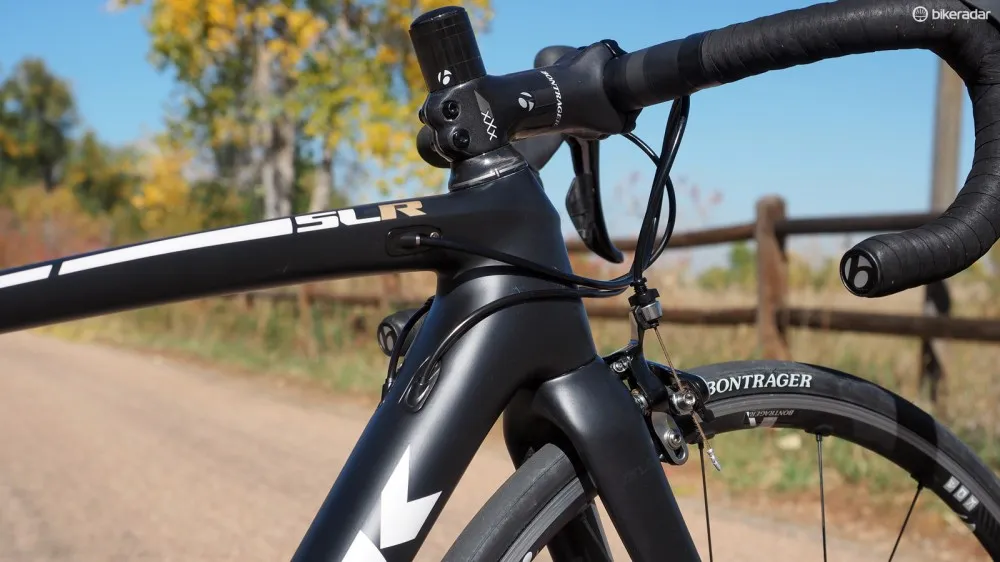
Not into a super-low position? No worries – Trek makes the Emonda SLR frame in a taller H2 version too
Such low weight and high stiffness comes with surprisingly variable ride quality, though.
Whereas the top-end Madone is firm but still reasonably comfortable for a long day in the saddle, the Emonda is more unyieldingly rigid in every direction, at least on smaller sizes. Although Trek claims its in-house bench testing shows the Emonda has a similar ride to the Madone, we find the Emonda to be noticeably buzzy. This is particularly evident on coarse pavement, but even relatively smooth dirt roads tend to rattle your hands until they're numb and lifeless, made worse by the relatively sparse stock bar tape.
Larger or heavier testers, however, found the Emonda chassis to be "particularly smooth, bordering on soft at the back."
This means that the superb chassis stiffness that's so good on the way up can sometimes cost smaller riders on the way down. Whereas smoother bikes can capably carve through bumpy corners, the Emonda is prone to getting knocked off-line if you encounter a hiccup when you're arcing a twisty downhill pass, particularly with the rather narrow 23mm tires that come stock.
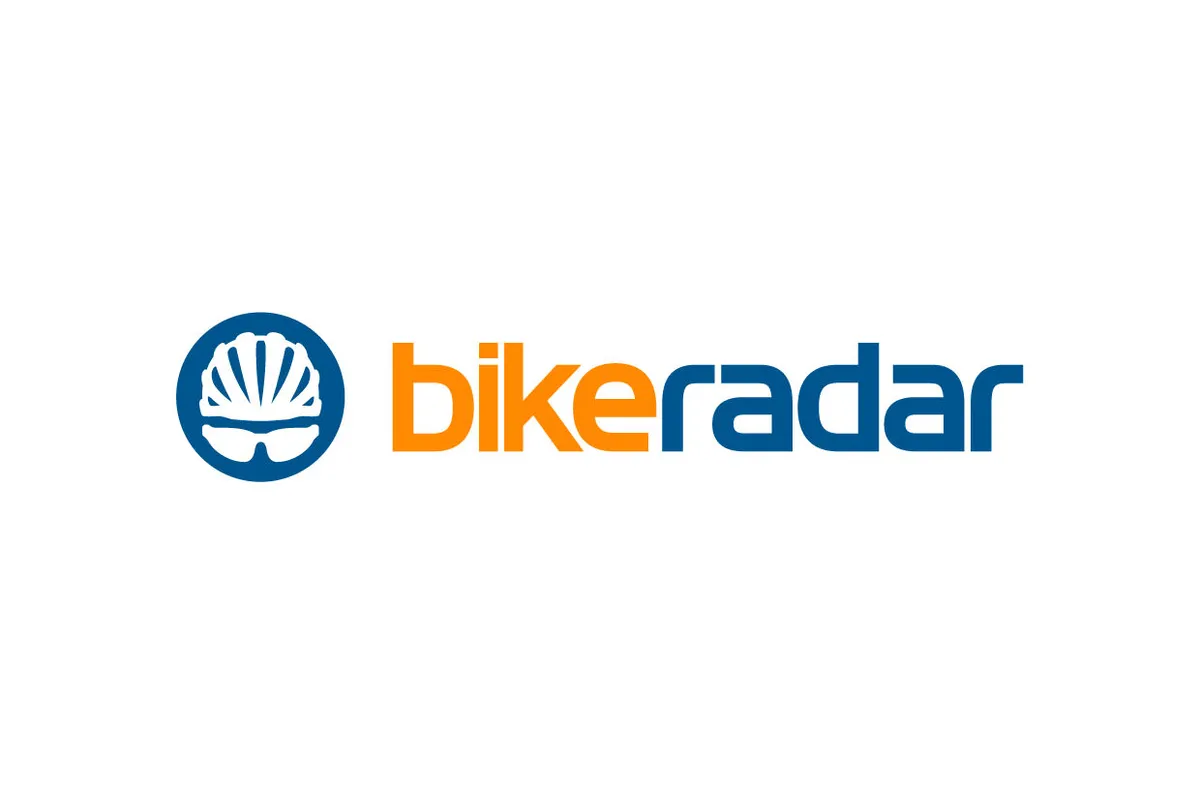
The big tube profiles and stiff carbon fibers don't make for the smoothest ride
For the record, Trek claims that its own in-house testing shows that the Emonda is not only "more compliant" than the Madone but also "matches or beats our major competitors' endurance bikes", at least based on total movement at the saddle rails under load.
That said, there's room for more generously sized rubber at both ends if you're willing to accept the slight weight penalty – up to 28mm out back and 26mm up front based on a few wheel and tire combinations we tried.
Frame: Efficient design, smooth lines
Trek claims a painted 56cm Emonda SLR 10 frame weighs just 690g. Our 52cm test sample weighs 766g, complete with the requisite rear derailleur hanger, cable routing hardware, and bolt-on chain catcher – that's nearly 100g lighter than a comparable Madone and essentially spot-on with Trek's claimed weight, given the extra bits and the heavier conventional paintjob rather than the SLR 10's barely-there Vapor Coat finish. The matching fork adds another 282g without the internal plug.
That said, it's clear that Trek's design priorities with the Emonda were low weight and stiffness, not aerodynamics – which is just fine if that's what you want or need.
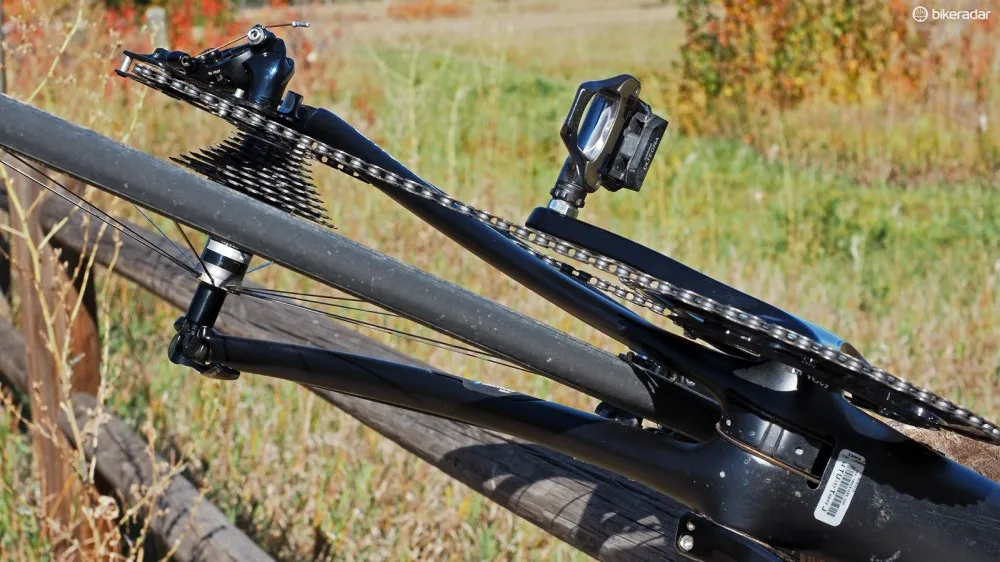
Asymmetrical chainstays make the most of the available space
Although there are plenty of ovalized sections, all of the tubes are nominally round in profile to maximize the frame's structural efficiency. Likewise, all of the joints feature smooth transitions free of abrupt kinks or unnecessary geometric filigree. Fork tips and rear dropouts are made from fiber – of course – and the bearing seats for both the headset and bottom bracket and molded directly into the structure so no additional cups are needed.
The cable routing is fully internal and the setup is convertible between mechanical and electronic drivetrains. The former features a remarkably minimal guide on the underside of the bottom bracket shell. Housing paths are generally well situated and it's fairly easy to replace the lines when needed, although there's quite a bit more rub on the sides of the head tube than we'd prefer.
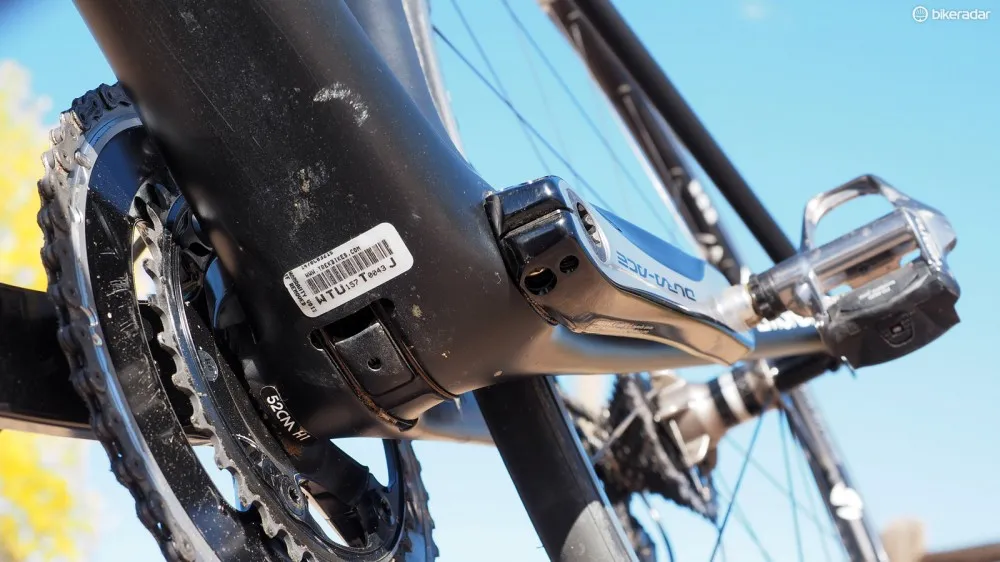
Even the bottom bracket cable guide is remarkably minimal
Otherwise, all of the usual Trek hallmarks are present and accounted for, including the 90mm wide bottom bracket shell, the e2 tapered head tube with an asymmetrical steerer tube profile, a no-cut integrated seatmast, and integrated chain catcher bolted to the base of the seat tube. As before, there's a pocket on the non-driveside chainstay for a Bontrager wireless speed and cadence sensor but this latest iteration is now smaller and tidier, plus it no longer pierces the entire tube.
The internal finish of the frame is utterly fantastic, too. This of course isn't visible when the bike is built but it does lend some confidence in terms of the overall build quality. After all, if this much attention is paid to the bits you can't see, that bodes well for the parts you can see, right?
Equipment: Awesome direct-mount brakes, versatile tubeless-ready wheels
Our Emonda SLR 8 model may only sit second rung from the bottom in the Emonda range but it comes with a complete Shimano Dura-Ace mechanical group and excellent finishing kit from Trek's Bontrager arm.
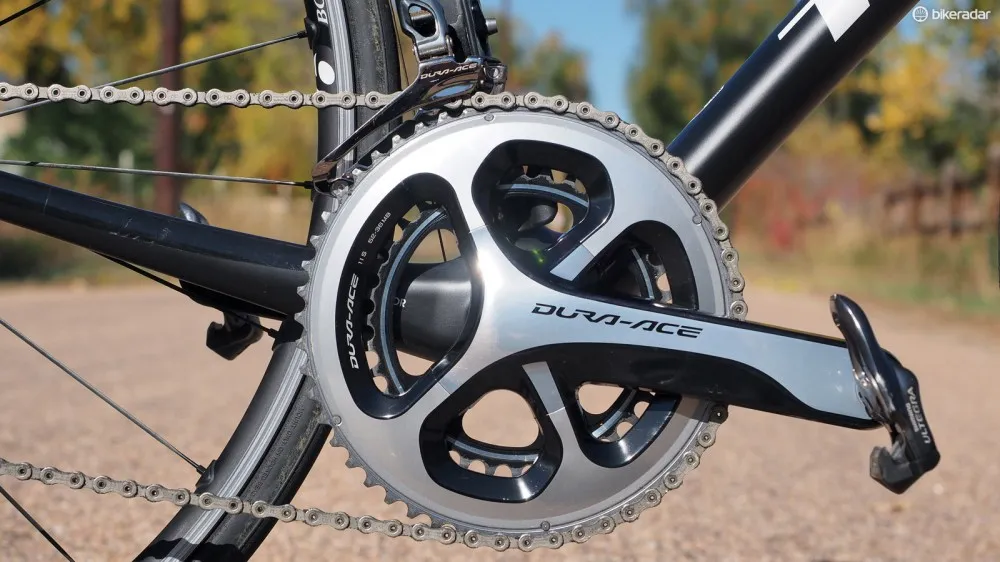
H1 Emonda bikes come with semi-compact 52/36T chainrings but the taller H2 bikes come with easier-spinning 50/34T ones
As in previous encounters, the transmission is fantastic with smooth and consistent shifts both front and rear, superb ergonomics, and generally quiet running. We say 'generally', since we're now paying much closer attention to the creaks and groans that occasionally emanate from the cassette's carbon reinforced spider under especially hard efforts – an issue we're currently investigating.
The brakes, however, are quite possibly the best road rim brakes we've ever used, with gobs of power, very good control, and an extremely positive and direct lever feel – all thanks to the new direct-mount standard's much stouter foundation, which more firmly anchors the pivot points and decreases caliper flex.
Granted, even this significant advance in rim brake technology isn't as good as a fully hydraulic disc setup but for traditionalists who just can't wrap their heads around road bikes with rotors, these are an awesome way to go.
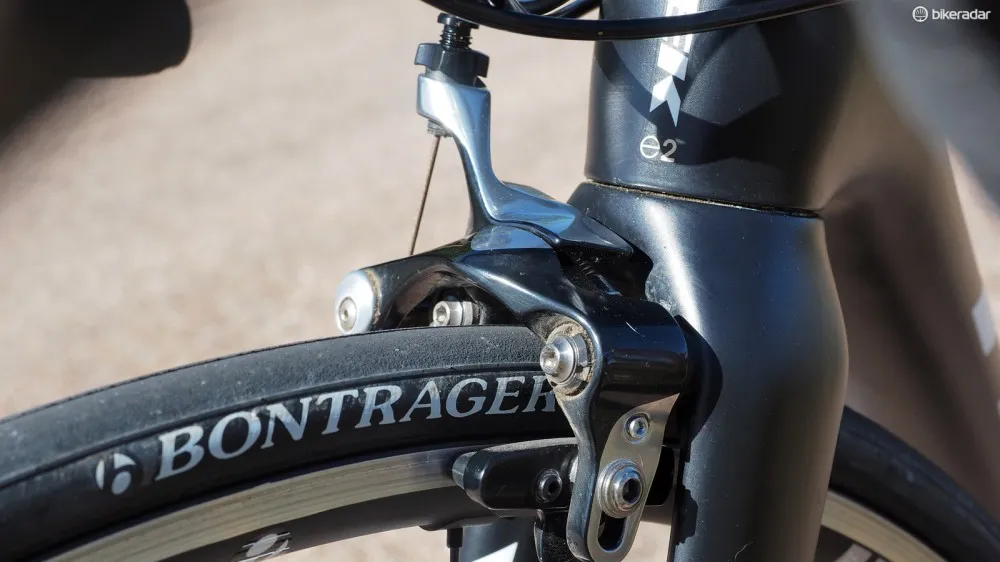
The direct-mount Shimano Dura-Ace brake calipers are fantastic
We also have nothing but praise for the Emonda SLR 8's Bontrager Race X Lite TLR alloy clincher wheels. While some might lament their decidedly non-aero shape, their modestly wide (17.5mm internal width) profile lends good casing support for secure and predictable cornering characteristics. They're also impressively stiff and quite light – just 1,440g for the set (or 1,518g if you add the tubeless-compatible rim strips). Previous experience has shown these to be very durable long-term, too, plus the DT Swiss Star Ratchet rear driver is simply bombproof.
The rest of the Bontrager finishing kit is very good, too. The Paradigm RXL saddle is firm but comfy and supportive, the workhorse Race X Lite stem is reassuringly solid and reasonably light, and the carbon fiber XXX handlebar boasts a versatile semi-anatomic bend that's easy to like.

The Bontrager Race X Lite TLR wheels may not be aero but they're stiff, durable and reasonably wide
'Easy to like' would be a good way to describe the Emonda SLR 8 in general. Riders who regularly look to blast their Strava times on faster courses won't be blown away by the bike's middling aerodynamic performance but if you're after light and stiff – and can tolerate the firm ride – this would be a good place to start (and possibly end) your search.

The new Trek Emonda SLR chassis is awesomely light and snappy but its very firm ride means you'll likely want to limit longer rides to smooth pavement
Complete bike specifications
- Frame: Trek Emonda SLR
- Available sizes: 50, 52 (tested), 54, 56, 58, 60, 62cm (H1 geometry); 47, 50, 52, 54, 56, 58, 60, 62, 64cm (H2 geometry)
- Fork: Trek Emonda
- Headset: Cane Creek Forty, 1 1/8 to 1 1/2in tapered
- Stem: Bontrager Race X Lite
- Handlebar: Bontrager XXX VR-C
- Handlebar tape: Bontrager gel cork
- Front brake: Shimano Dura-Ace BR-9010 Direct Mount
- Rear brake: Shimano Dura-Ace BR-9010 Direct Mount
- Brake levers: Shimano Dura-Ace STI Dual Control ST-9000
- Front derailleur: Shimano Dura-Ace FD-9000
- Rear derailleur: Shimano Dura-Ace RD-9000-SS
- Shift levers: Shimano Dura-Ace STI Dual Control ST-9000
- Cassette: Shimano Dura-Ace CS-9000, 11-28T
- Chain: Shimano Dura-Ace CN-9000
- Crankset: Shimano Dura-Ace FC-9000, 52/36T
- Bottom bracket: Enduro
- Pedals: N/A
- Wheelset: Bontrager Race X Lite TLR
- Front tire: Bontrager R4 Hard-Case Lite, 700x23mm
- Rear tire: Bontrager R4 Hard-Case Lite, 700x23mm
- Saddle: Bontrager Paradigm RXL
- Seatpost: Bontrager Ride Tuned Carbon seatmast
- Total weight, as tested: 6.19kg (13.65lb) without pedals
